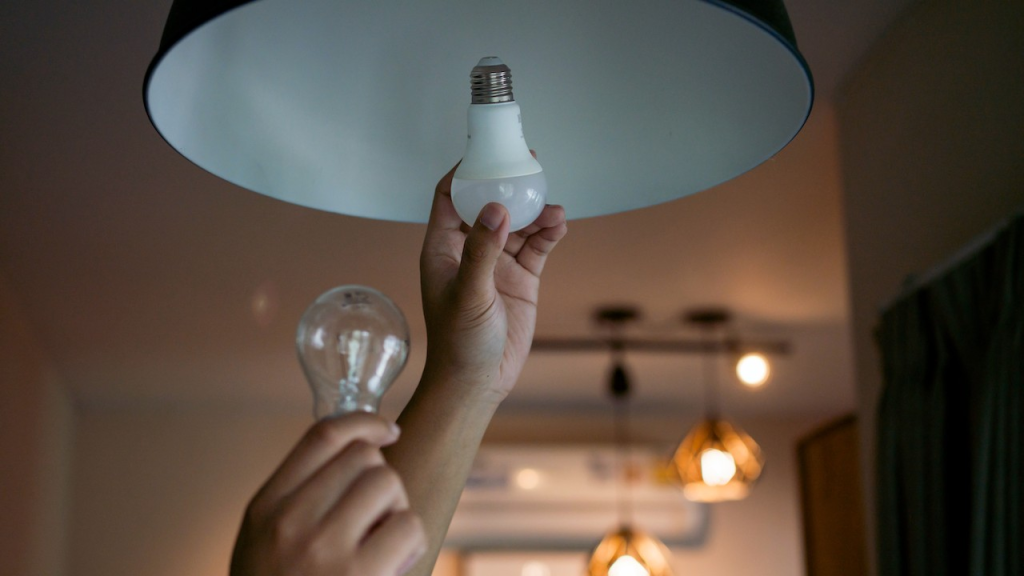How much does it cost to light up your home with LEDs? It is a myth that LEDs use more electricity than traditional light sources. In fact, LEDs are low-voltage devices and are very efficient. According to the National Renewable Energy Laboratory (NREL), the average U.S. household could save $85 per year by replacing all of its incandescent bulbs with LED bulbs. So, how many amperes are drawn from LEDs and what is the impact on your electricity bills?
What are amperes and how do they impact your electricity bills
Amperes, commonly referred to as “amps”, measure the flow of electric current in a circuit. It’s important to understand amperage when running any electrical device since each device has a specific amperage requirement indicated by a number on the device itself. For instance, an appliance like a blender may require 20 or more amps to power it, while something smaller such as fans and light bulbs might require just 1 or 2 amps.
Determining the amp requirements for an appliance before plugging it into an outlet can be critical in avoiding electrical problems that could result in both monetary costs and personal safety issues. When looking at your electricity bills, keep in mind that your total cost is calculated based on watts multiplied by hours used, which translates to how much current is required per hour to run your appliances with the corresponding amperage needed. Boosting efficiency and lowering your electricity bill requires understanding and utilizing amperage effectively.
How many amperes does an LED light draw
LED lights have become increasingly popular due to their low energy requirements and their longevity when compared to other types of lighting products. Understanding amperage draw is an important factor when determining the optimal solution for a space. An LED light generally draws between 0.02 – 0.08 amps depending on the wattage being used. This is significantly lower than other incandescent lights which can require up to 5 amps of load. Making the switch to LED’s is an easy way to quickly reduce the amount of energy being consumed in a space without sacrificing quality lighting effects.
The impact of LEDs on your electricity bills
Energy-efficient LED bulbs have the potential to drastically reduce your electricity bills. Installing more of these bulbs around your home can benefit you in multiple ways – not only will you enjoy cost savings from lower energy consumption, but LEDs can also outlast regular lightbulbs by up to 25 times! This means less time spent replacing bulbs and less strain on the environment as fewer discarded materials will be produced. You’ll also be able to brighten any dark corners of your home with little to no energy usage, thereby cutting your electricity costs and improving your family’s quality of life.
How to save money on your electricity bills by using LEDs

LED bulbs are a great way to save money on electricity bills. They are considerably more energy-efficient than traditional halogen or incandescent lighting, consuming up to 90% less energy and often lasting 25 times longer than the alternatives. LEDs can reduce lighting costs by up to 80%, making them an ideal choice for those looking to shave down their electricity bills while providing quality light into their home. They are also widely available and easy to install – simply switch out your existing bulb with one that features an LED label. Even for relatively small investments, the savings make LEDs worth considering as part of your household’s budgeting strategy.
Conclusion: Saving electricity using LED lights
In conclusion, amperes are the units used to measure the flow of electrons and one way to save on your electricity bill is by using LED lights as they use significantly fewer amperes than other types of lightbulbs. In addition to saving money, LEDs also last much longer than traditional lightbulbs, making them a more environmentally friendly choice. We hope this article has helped you better understand how amperes work and how you can save money by using LEDs in your home or office.
FAQs about Amperes and Electricity
Generally speaking, LED bulbs will draw anywhere between 0.02 to 0.08 amperes depending on their wattage. This range is significantly lower than other traditional incandescent lightbulbs
The impact of LEDs on electricity can be significant. LED bulbs draw significantly less amperage than traditional halogen or incandescent lightbulbs, requiring up to 90% less energy. This means that they are much more efficient when it comes to electricity consumption and can provide considerable savings on your monthly electricity bills.
LEDs (Light Emitting Diodes) are much more energy efficient than other lighting sources and draw significantly less amperage. LED bulbs generally require anywhere from 0.02 to 0.08 amperes of power, whereas traditional incandescent lightbulbs can require up to 5 amps of load. This means that LED bulbs consume up to 90% less energy than their counterparts and can drastically reduce your electricity bills.
They generate very little heat when lit up. In comparison, traditional halogen or incandescent bulbs create a lot of excess heat along with light, meaning that their energy consumption is considerably higher due to the extra energy needed for heat dissipation. As LEDs generate very little heat, most of their energy goes toward producing light instead. This makes them a much more economical option for lighting in terms of both cost and energy consumption.











